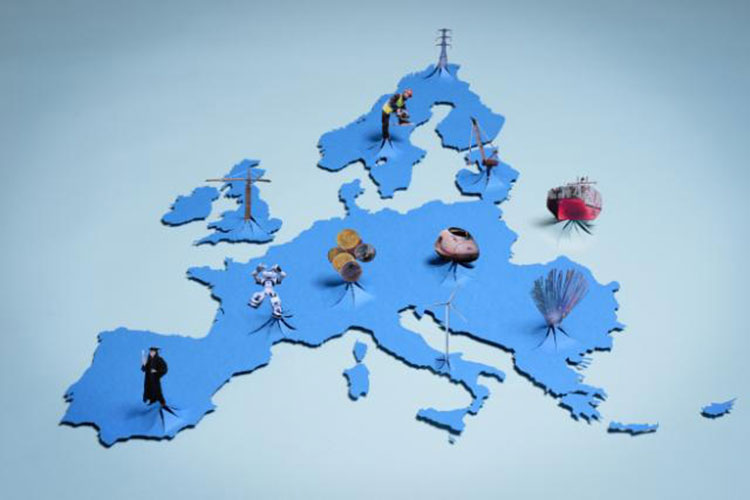One year after adopting its Circular Economy Package, the Commission reports on the delivery and progress of key initiatives of its 2015 Action Plan.
Together with the report, the Commission also:
- took further measures today by establishing a Circular Economy Finance Support Platform with the European Investment Bank (EIB) bringing together investors and innovators
- issued guidance to Member States on converting waste to energy
- proposed a targeted improvement of legislation on certain hazardous substances in electrical and electronic equipment.
First Vice-President Frans Timmermans, responsible for sustainable development, said: “Building a circular economy for Europe is a key priority for this Commission. We have made good progress and are planning new initiatives in 2017. We are closing the loop of design, production, consumption, and waste management, thereby creating a green, circular and competitive Europe.”
Vice-President Jyrki Katainen, responsible for jobs, growth, investment and competitiveness, said: “Building on the achievements of the Juncker Investment Plan, I am pleased that we can again work with the EIB to match investors with innovators. Our goal is to upscale investment, both public and private, in the circular economy. It very often means new business model and they may require new, innovative ways of financing. This new Platform is an excellent tool to raise awareness of the circular economy projects’ immense business potential and, consequently, draw in more funding for their financing. The Circular Economy is an important element to modernise the European economy and we are on track to deliver this sustainable change.”
EIB Vice President Jonathan Taylor, responsible for financing environment, climate action and circular economy, said: “The EIB is pleased to join forces with the European Commission and use our combined financial firepower and expertise to make our economies more circular. As the world’s largest multilateral climate action lender with over EUR 19 billion of dedicated financing last year, we see the circular economy as key to reversing the course of climate change, making more sustainable use of our planet’s scarce resources, and contributing to Europe’s growth. To accelerate this transition, we will continue to advise and invest increasingly in innovative circular business models and new technologies as well as in more traditional resource efficiency projects. The new Circular Economy Finance Support Platform will be an essential tool to boost awareness and financing of circular economy projects.”
Building on the momentum of the Investment Plan for Europe, which has already mobilised investments worth EUR 164 billion by end-2016. The Circular Economy Finance Support Platform will enhance the link between existing instruments, such as the European Fund for Strategic Investments (EFSI) and the InnovFin – EU Finance for Innovators initiative backed by Horizon 2020, and potentially develop new financial instruments for circular economy projects. The Platform will bring together the Commission, the EIB, National Promotional Banks, institutional investors and other stakeholders, raising awareness of circular economy investment opportunities and promoting best practices amongst potential promoters, analysing projects and their financial needs, and providing advice on structuring and bankability.
Today’s Commission Communication on the role of waste-to-energy processes in the circular economy will maximise the benefits of this small but innovative part of the national energy mix. It provides guidance for Member States to achieve the right balance of waste-to-energy capacity, highlighting the role of the waste hierarchy which ranks waste management options according to their sustainability and gives top priority to preventing and recycling of waste. It helps optimising their contribution to the Energy Union and exploiting the opportunities for cross-border partnerships where this is appropriate and in line with our environmental goals.
The package adopted by the Commission today also contains a proposal to update legislation to restrict the use of certain hazardous substances in electrical and electronic equipment (RoHS Directive). The proposal promotes substitution of hazardous materials to make the recycling of components more profitable. The proposed changes will further facilitate second-hand market operations (e.g. reselling) and repair of electrical and electronic equipment. It is estimated that the measures will prevent more than 3000 tonnes of hazardous waste per year in the EU, and enable savings of energy and raw materials. In the health sector alone, an estimated EUR 170 million in healthcare costs could be saved.
Finally, in its report on progress since last year, the Commission lists the key measures taken in areas such as waste, ecodesign, food waste, organic fertilisers, guarantees for consumer goods, and innovation and investment. Circular economy principles have been gradually integrated in industrial best practices, green public procurement, the use of cohesion policy funds, and through new initiatives in the construction and water sectors. To make the transition to the circular economy happen on the ground, the Commission also calls on the European Parliament and Council to progress with the adoption of the waste legislation proposals, in line with the Joint Declaration on the EU’s legislative priorities for 2017. In the coming year, the Commission is committed to deliver further on the Circular Economy Action Plan, i.a. with a strategy on plastics, a monitoring framework for the circular economy and a proposal for promoting water re-use.



